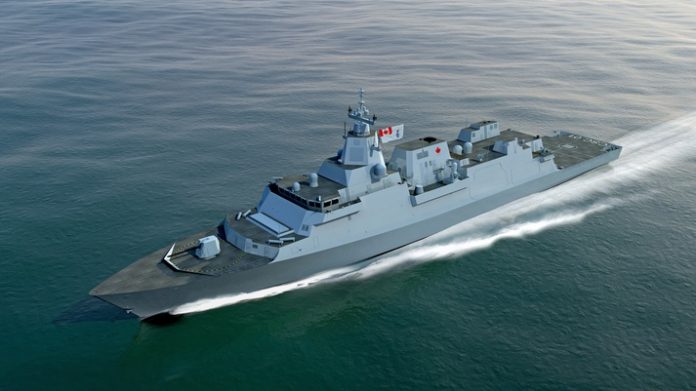The Canadian Surface Combatant contract was signed Thursday by the Liberal government. The contact with Irving and the Lockheed Martin-BAE consortium was negotiated in near record time.
The signing of the contract will be announced by Procurement Minister Carla Qualtrough at the Irving yard in Halifax on Friday.
That $60 billion project will see the eventual construction of 15 warships in the largest single government purchase in Canadian history.
Lockheed offered Canada the Type 26 warship designed by BAE in the United Kingdom. Irving is the prime contractor and the vessels will be built at its yard.
Public Services and Procurement Canada did not respond to a request for comment.
But some industry representatives are questioning why the government moved so quickly to get the contract signed. They say with a deal of such financial size – and potential risk to the taxpayer – federal bureaucrats should have moved slowly and carefully. The Type 26 was selected at the end of October and the deal was negotiated in less than three months (negotiations did not take place over the Christmas holidays).
The entry of the BAE Type 26 warship in the competition was controversial from the start and sparked complaints the procurement process was skewed to favour that vessel. Previously the Liberal government had said only mature existing designs or designs of ships already in service with other navies would be accepted, on the grounds they could be built faster and would be less risky. Unproven designs can face challenges as problems are found once the vessel is in the water and operating.
But the criteria was changed and the government and Irving accepted the BAE design, though at the time it existed only on the drawing board. Construction began on the first Type 26 frigate in the summer of 2017 for Britain’s Royal Navy, but it has not yet been completed.
Company claims about what the Type 26 ship can do, including how fast it can go, are based on simulations or projections. The two other bidders in the Canadian program had ships actually in service with other navies so their capabilities are known.
Both Irving and the federal government have insisted the procurement was conducted in a way that ensures all bidders are treated equally, overseen by a fairness monitor with no unfair advantage given to any individual bidder.
Nonetheless, while three consortiums submitted bids for the surface combatant program, several European shipbuilders decided against participating because of concerns about the fairness of the process. Others raised concerns about BAE’s closeness with the Halifax firm.
The Canadian Surface Combatant program has already faced rising costs. In 2008 the then-Conservative government estimated the project would cost roughly $26 billion. But in 2015, Vice-Admiral Mark Norman, then commander of the navy, voiced concern that taxpayers may not have been given all the information about the program, publicly predicting the cost for the warships alone would approach $30 billion.
Last year, Alion, one of the companies that submitted a bid on the project, filed a complaint with the Canadian International Trade Tribunal alleging the process was flawed and that BAE’s Type 26 can’t meet Canadian requirements. Alion has also filed a legal challenge in federal court, asking for a judicial review of the decision by Irving and the government to select the BAE design. Alion argued the Type 26 cannot meet the stated mandatory requirements, including speed, that Canada set out for the new warship, so it should be disqualified.
The CITT, however, rejected that complaint on Jan. 30. “The Canadian International Trade Tribunal has determined that Alion Science and Technology Canada Corporation and Alion Science and Technology Corporation did not have standing to file a complaint before the Canadian International Trade Tribunal,” it noted in a statement.
































